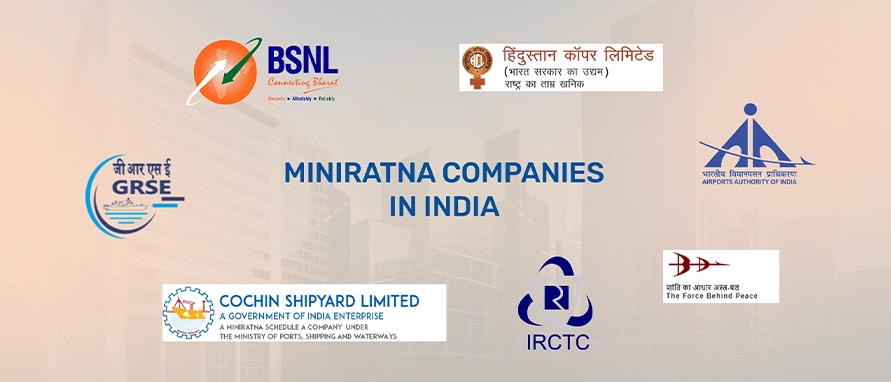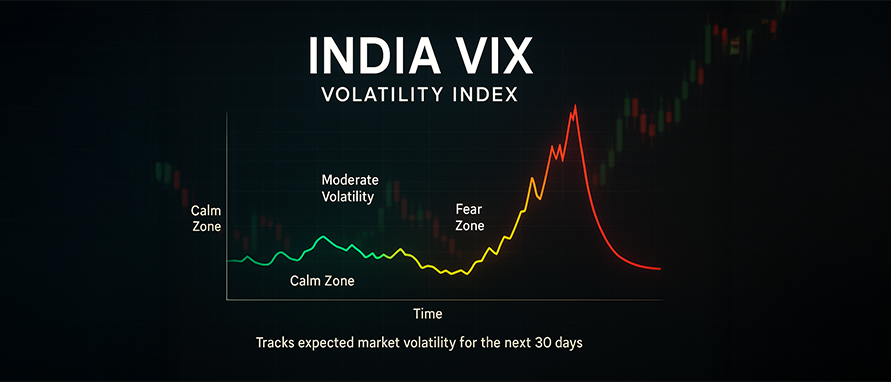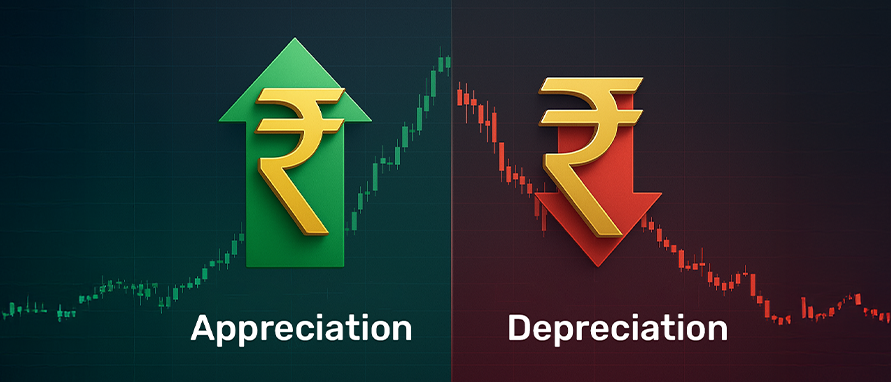-
Our ProductsLoansCardsInsuranceInvestmentsStock MarketElectronics MallCIBIL ScoreKnowledge CentreAcademyCalculators
- Our Services
- My Account
- Discover
What is the Main Difference Between FPI and FDI
Foreign investments play a crucial role in strengthening a country’s economic growth, providing capital, technology, and employment opportunities. India, as one of the fastest-growing economies, attracts significant foreign investments under two main routes — Foreign Portfolio Investment (FPI) and Foreign Direct Investment (FDI). While both involve capital inflow from foreign entities, they differ substantially in terms of investment style, control, duration, and regulatory treatment. Understanding the differences between FPI and FDI is important for policymakers, investors, and businesses to analyse these flows effectively.
Understanding Foreign Direct Investment (FDI)
FDI refers to investment made by a foreign entity directly into the business operations or assets of a domestic company. It usually involves acquiring a substantial stake in the company (often over 10%) with an intention to exert control or influence.
Characteristics of FDI:
Long-term investment: Intended for sustained involvement in the host country's business environment.
Management control: The investor often takes part in decision-making and business operations.
Sectors involved: Common in infrastructure, manufacturing, retail, and technology.
Forms: Includes joint ventures, wholly owned subsidiaries, mergers and acquisitions, and greenfield investments.
FDI often involves not just capital but also technology transfer, managerial expertise, and employment generation.
Understanding Foreign Portfolio Investment (FPI)
FPI involves investment in a country’s financial assets such as equities, bonds, mutual funds, or other marketable securities. Unlike FDI, it does not provide the investor with any control over the company’s operations.
Characteristics of FPI:
Short- to medium-term: FPIs can enter and exit the market more easily, depending on returns and sentiment.
No control: Investors do not get involved in management or business strategy.
High liquidity: These investments are often in listed securities, making them more liquid.
Volatility: FPI inflows and outflows can be influenced by global economic events and local policy changes.
FPI is commonly used by hedge funds, pension funds, and retail investors seeking diversification in global markets.
Key Differences Between FPI and FDI
Here is a breakdown of the major differences between the two forms of investment:
| Aspect | FDI | FPI |
|---|---|---|
| Nature of Investment |
Direct control and ownership |
Passive financial interest |
| Duration |
Long-term |
Short- to medium-term |
| Investor Role |
Active participation in management |
No involvement in operations |
| Entry Process |
Requires government and regulatory approvals |
Generally easier and faster |
| Volatility |
Less volatile |
Highly sensitive to market conditions |
| Regulatory Authority |
DPIIT, RBI, sectoral regulators |
SEBI, RBI |
| Examples |
Setting up a factory, joint ventures |
Buying shares in the secondary market |
This comparison helps clarify why the government may treat these investments differently under various policies and caps.
Impact on the Indian Economy
FDI and FPI contribute differently to the Indian economy:
FDI supports long-term development through capital formation, job creation, and technology adoption.
FPI enhances market depth and liquidity but can lead to capital flight in times of uncertainty.
A combination of both supports growth, resilience, and long-term financial health.
Regulatory Framework in India
India’s foreign investment policies are governed by different regulators depending on the investment type:
FDI is regulated under the Foreign Exchange Management Act (FEMA), with rules from the Department for Promotion of Industry and Internal Trade (DPIIT).
FPI is regulated by the Securities and Exchange Board of India (SEBI) and RBI under the FPI Regulations.
Investments are subject to sectoral caps, entry routes (automatic or government approval), and reporting norms as applicable.
Risk and Return Profile
The risk-return equation varies between FPI and FDI:
FDI tends to offer lower but more stable returns with long-term benefits.
FPI can offer quicker returns but also exposes investors to currency risk, market volatility, and political instability.
These risks are important factors affecting foreign capital flows for investors and policymakers.
Conclusion
FPI and FDI are both crucial for India’s economic ecosystem, but they serve different purposes. While FDI focuses on long-term control and development, FPI provides market liquidity and diversification. Understanding the differences between these types of foreign investments clarifies their distinct roles for investors, business owners, and policy analysts. Policymakers consider both to support growth momentum and financial market stability.
Disclaimer
This content is for informational purposes only and the same should not be construed as investment advice. Bajaj Finserv Direct Limited shall not be liable or responsible for any investment decision that you may take based on this content.
FAQs
Is FDI better than FPI for the economy?
Foreign Direct Investment (FDI) benefits the economy through infrastructure growth and job creation, while Foreign Portfolio Investment (FPI) supports liquidity but is comparatively more volatile.
Can a foreign investor make both FDI and FPI in India?
A foreign investor can participate in both Foreign Direct Investment (FDI) and Foreign Portfolio Investment (FPI) in India if they meet regulatory requirements and align with their investment goals.
How are FDI and FPI taxed in India?
Taxation on Foreign Direct Investment (FDI) and Foreign Portfolio Investment (FPI) differs, with FPI gains generally taxed as capital gains and FDI income often subject to corporate or withholding taxes.
Which sectors in India attract the most FDI?
Sectors such as telecommunications, services, computer software and hardware, and construction attract the highest levels of Foreign Direct Investment (FDI) in India.
Can FPI investors influence company decisions?
Foreign Portfolio Investment (FPI) investors cannot influence company decisions as they lack controlling rights or management authority.
Anshika brings 7+ years of experience in stock market operations, project management, and investment banking processes. She has led cross-functional initiatives and managed the delivery of digital investment portals. Backed by industry certifications, she holds a strong foundation in financial operations. With deep expertise in capital markets, she connects strategy with execution, ensuring compliance to deliver impact.
Related Blogs

Nupur Wankhede

Anshika

Geetanjali Lachke

Roshani Ballal

Roshani Ballal

Anshika

Anshika

Nupur Wankhede

Anshika

Nupur Wankhede

Nupur Wankhede

Geetanjali Lachke

Roshani Ballal

Roshani Ballal

Geetanjali Lachke

Geetanjali Lachke

Nupur Wankhede

Anshika

Nupur Wankhede

Nupur Wankhede

Nupur Wankhede

Nupur Wankhede

Nupur Wankhede

Nupur Wankhede

Nupur Wankhede

Geetanjali Lachke

Geetanjali Lachke

Roshani Ballal

Nupur Wankhede

Anshika

Anshika

Nupur Wankhede

Nupur Wankhede

Nupur Wankhede

Nupur Wankhede

Nupur Wankhede

Nupur Wankhede

Nupur Wankhede

Nupur Wankhede

Nupur Wankhede

Nupur Wankhede

Nupur Wankhede

Nupur Wankhede

Roshani Ballal

Anshika

Nupur Wankhede

Geetanjali Lachke

Nupur Wankhede

Nupur Wankhede

Anshika

Anshika

Nupur Wankhede

Anshika

Anshika

Nupur Wankhede
.webp)
Nupur Wankhede

Nupur Wankhede

Nupur Wankhede

Nupur Wankhede

Nupur Wankhede

Nupur Wankhede

Nupur Wankhede
.webp)
Nupur Wankhede

Nupur Wankhede

Nupur Wankhede

Nupur Wankhede
-in-India.webp)
Nupur Wankhede

Nupur Wankhede

Nupur Wankhede

Anshika

Nupur Wankhede

Nupur Wankhede

Anshika

Anshika

Nupur Wankhede

Nupur Wankhede

Nupur Wankhede

Nupur Wankhede

Nupur Wankhede

Nupur Wankhede

Nupur Wankhede

Nupur Wankhede

Nupur Wankhede

Nupur Wankhede

Anshika

Nupur Wankhede

Nupur Wankhede

Nupur Wankhede

Nupur Wankhede

Anshika

Nupur Wankhede

Nupur Wankhede
-Meaning-Importance.webp)
Nupur Wankhede

Anshika

Nupur Wankhede

Nupur Wankhede

Nupur Wankhede

Anshika

Nupur Wankhede

Nupur Wankhede

Nupur Wankhede

Geetanjali Lachke

Geetanjali Lachke

Geetanjali Lachke

Anshika

Anshika

Nupur Wankhede

Nupur Wankhede
-portfolio.webp)
Nupur Wankhede

Anshika

Roshani Ballal

Geetanjali Lachke

Geetanjali Lachke

Geetanjali Lachke

Geetanjali Lachke

Geetanjali Lachke

Roshani Ballal

Roshani Ballal

Geetanjali Lachke

Geetanjali Lachke

Geetanjali Lachke

Roshani Ballal

Roshani Ballal

Geetanjali Lachke

Roshani Ballal

Roshani Ballal

Roshani Ballal

Roshani Ballal

Roshani Ballal

Roshani Ballal

Roshani Ballal

Roshani Ballal

Roshani Ballal




























































.webp)



.webp)












.webp)




.webp)




































